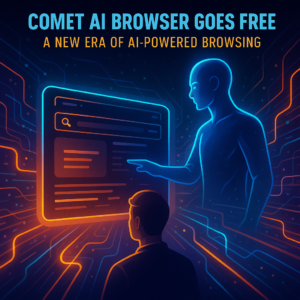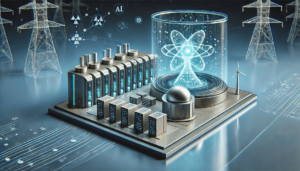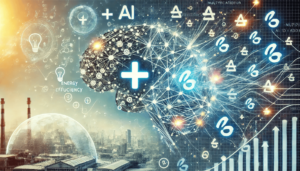Neuralink’s Leap into Humanity: The Dawn of Brain-Computer Interfaces and the Shifting Landscape of AI

Bridging Biology and AI: The Dawn of Neuralink's Brain-Computer Interfaces
- What is the significance of Neuralink’s successful implant of a brain chip in a human patient?
- What are the ethical and regulatory challenges posed by the integration of brain-computer interfaces like Neuralink’s brain chip into human cognition?
- How does Neuralink’s achievement impact the future of medicine and the relationship between humans and AI?
In a groundbreaking development that may redefine the boundaries between the human brain and artificial intelligence, Neuralink, Elon Musk’s ambitious brain-chip startup, has successfully implanted its first brain chip in a human patient. This news, reported by Reuters (link to article), marks a pivotal moment in the ongoing saga of AI and human-machine integration.
A Milestone in Brain-Computer Interfaces (BCIs)
The implant, described by Musk as exhibiting “promising neuron spike detection,” represents a significant technological breakthrough. Neuralink’s approach, which involves surgically placing a brain-computer interface in a region of the brain controlling the intention to move, opens new possibilities for patients with paralysis and various neurological conditions. This advancement is not just a leap for Neuralink but also a giant stride for BCIs and their potential applications in medicine, computing, and beyond.
The Ethical and Regulatory Paradigm
However, this innovation brings to the forefront a host of ethical and regulatory challenges. As discussed in my previous blog article, “AI Regulation in the EU: Navigating New Frontiers in Technology Governance,” the rapid evolution of AI technologies, including BCIs, demands a careful and proactive regulatory approach. The European Union’s trailblazing efforts in AI governance, particularly with the AI Act, set a global benchmark. Yet, the integration of AI into the human brain presents uncharted territory, raising questions about privacy, data security, and the very nature of human autonomy.
Global AI Regulation and the Neuralink Paradigm
The Neuralink development also echoes themes explored in my article, “AI’s Tipping Point: Riding the Crest of Innovation into 2024.” As AI becomes deeply personalized and integrated into human physiology, the conversation shifts from external regulation to internalized governance. This transition underscores the urgency for an international dialogue and collaboration in AI regulation, transcending regional boundaries to address a technology that is rapidly becoming a core part of human existence.
Balancing Innovation and Ethics
The implant’s success also exemplifies the delicate balance between fostering innovation and ensuring ethical responsibility. While the potential to overcome neurological barriers is immense, so too is the responsibility to safeguard against misuse and unintended consequences. The dialogue around Neuralink’s breakthrough must, therefore, extend beyond scientific achievement to encompass the broader societal, ethical, and philosophical implications of merging human cognition with AI.
Looking Ahead: The Future of BCIs and AI Integration
As we look to the future, the successful implant by Neuralink marks the beginning of a new era. It’s an era where AI is not merely a tool or a system operating in tandem with humans, but a part of human biology itself. This convergence of biology and technology, while offering unprecedented opportunities, also calls for a paradigm shift in how we perceive, regulate, and integrate AI into our lives and societies.
Neuralink’s recent achievement is more than a technological milestone; it’s a catalyst for a profound reexamination of the relationship between humans and AI. As we navigate this uncharted terrain, the need for thoughtful, inclusive, and forward-looking approaches to AI governance becomes ever more apparent. This moment in history is not just about celebrating a breakthrough but also about responsibly shaping a future where technology enhances human potential without compromising the core of what makes us human.




